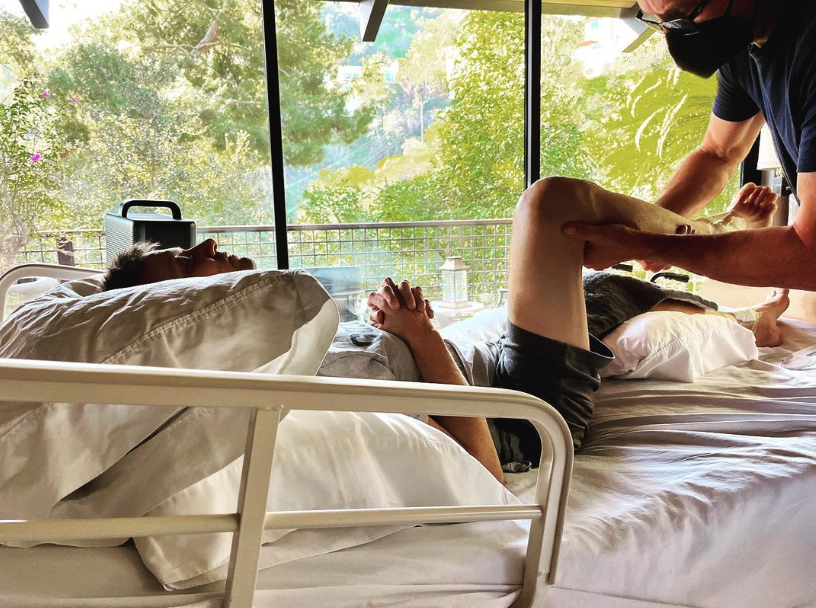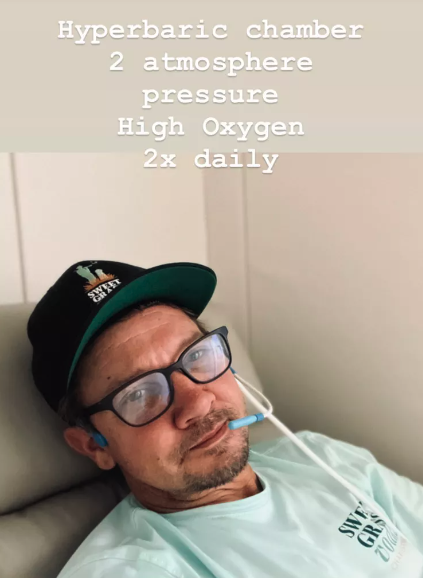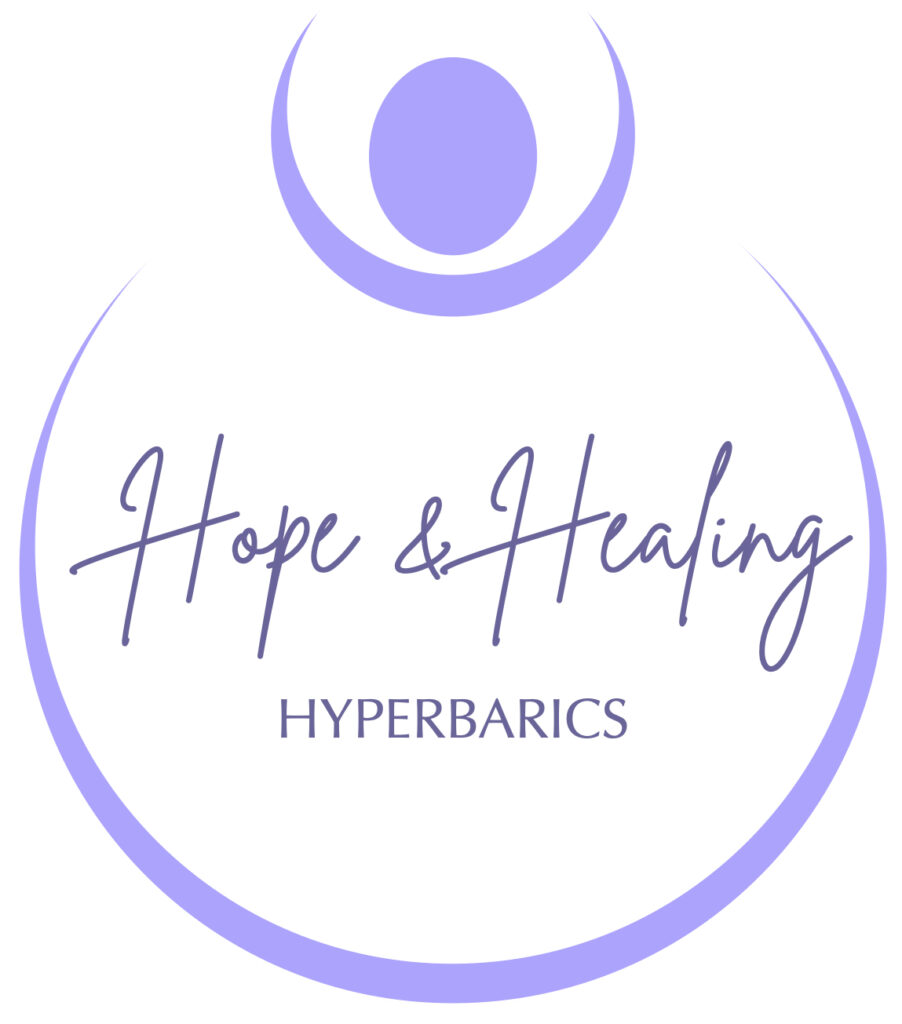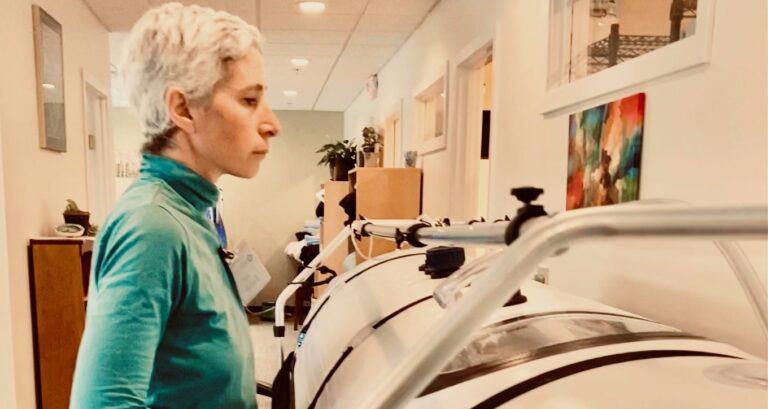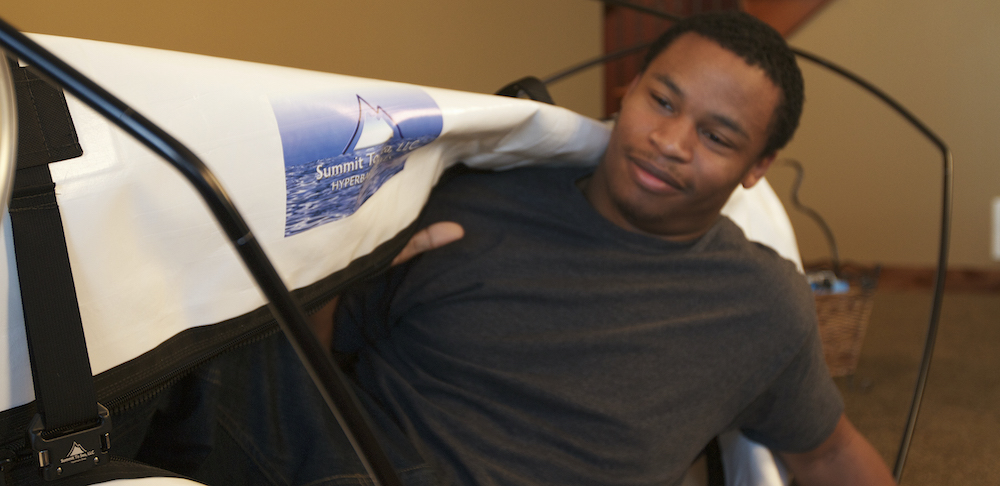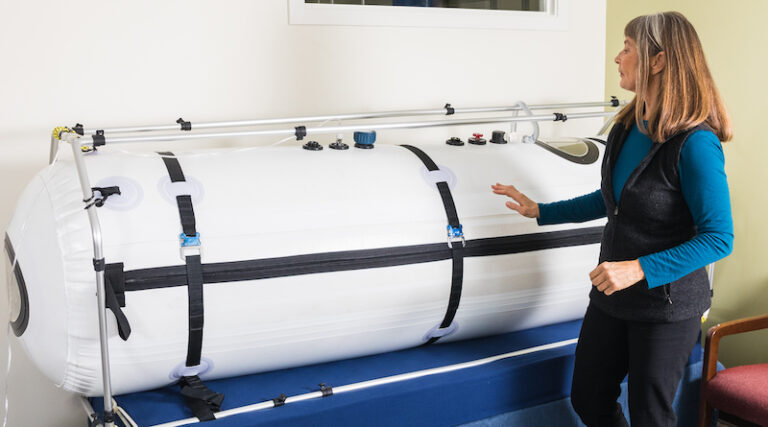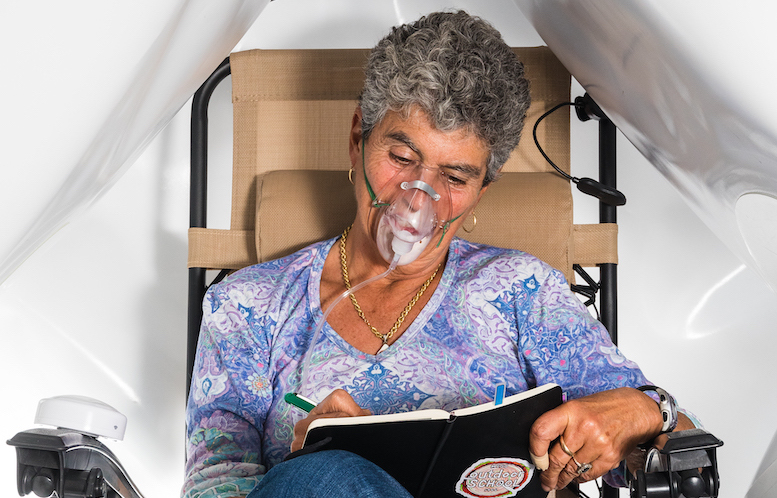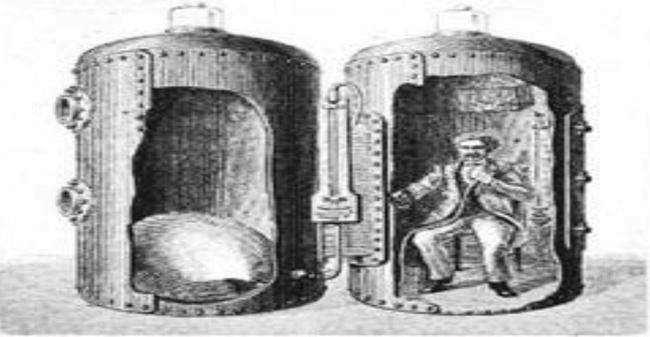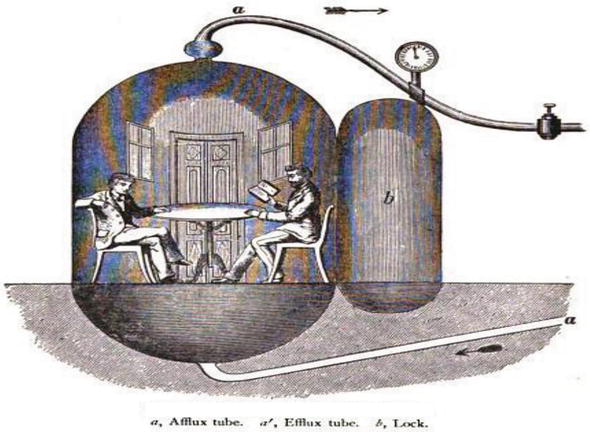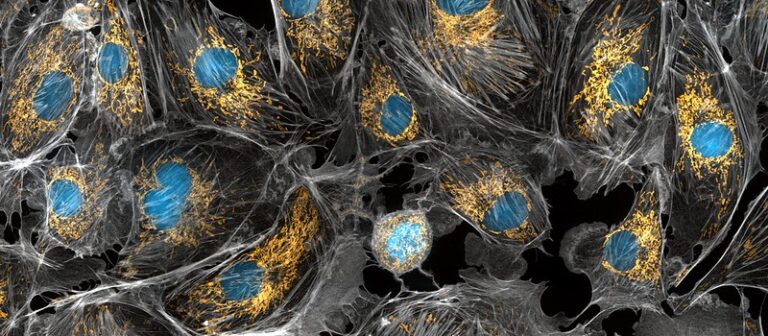

There are two basic types of HBOT – high pressure HBOT and mild HBOT.
- High pressure HBOT treatments are delivered in a hard-sided chamber typically at pressures greater than 1.5 ATA, using 100% oxygen.
- Mild HBOT takes place at lower pressures (typically 1.5 ATA or below), with 90-95% oxygen, inside a portable. soft-sided chamber.
- In clinical trials to date, there has been virtually no difference in outcome between mild HBOT and high pressure HBOT.
Hyperbaric Vermont’s facilities provide mild HBOT, with concentrated oxygen (90-95%) at 1.3 ATA.
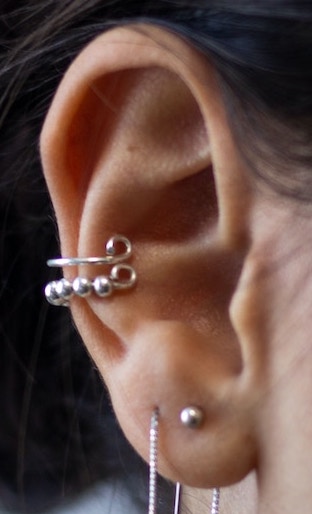
While mild HBOT is almost always painless, one possible side effect that may occur at the beginning and/or end of treatment (during compression and decompression) is a sensation of fullness in your ears, much like what you feel when you take off or land in a plane.
This feeling can be alleviated by yawning, chewing gum, or pinching your nostrils shut and exhaling gently through your nose.
We also find that as patients grow accustomed to HBOT, the easier compression and decompression get.
Occasionally, patients with sinus congestion will experience greater ear discomfort. This can be easily addressed by lowering the pressure in the chamber until the congestion clears – something HBOT can actually clear rather quickly.
Some patients express concern that they will feel claustrophobic inside the chamber. Fortunately, our chambers are made of translucent material, have windows, and actually feel very light and roomy once they’re fully inflated.
The chambers also have pressure valves and zippers which can be operated from the inside, giving patients a greater feeling of control.
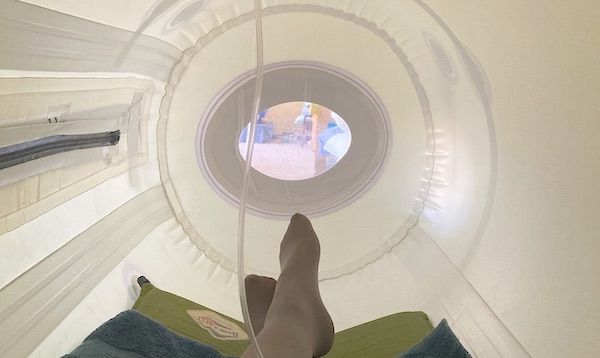
High-pressure oxygen therapy does require managing the safety risk of using 100% oxygen and the possibility of oxygen toxicity. However, mild HBOT, which we use, offers the same physiological benefits for most conditions with only minor, temporary potential side effects.
Seizure from oxygen toxicity is a risk related to pressures typically greater than 2.0 ATA and is unheard of below 1.5 ATA.
Please feel free to contact us to find out if Hyperbaric Oxygen Therapy can work for you.
The post What Are The Side-Effects of Hyperbaric Oxygen Therapy? appeared first on Hyperbaric Vermont.

